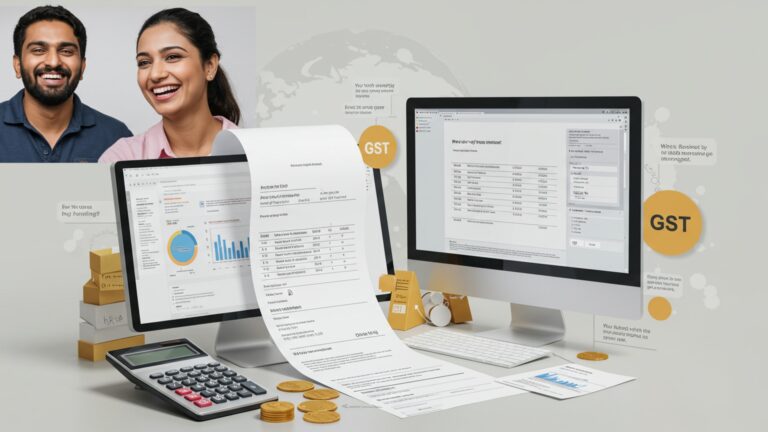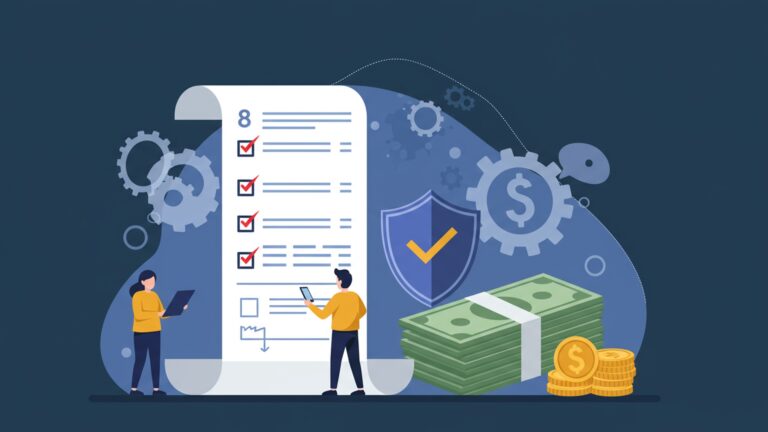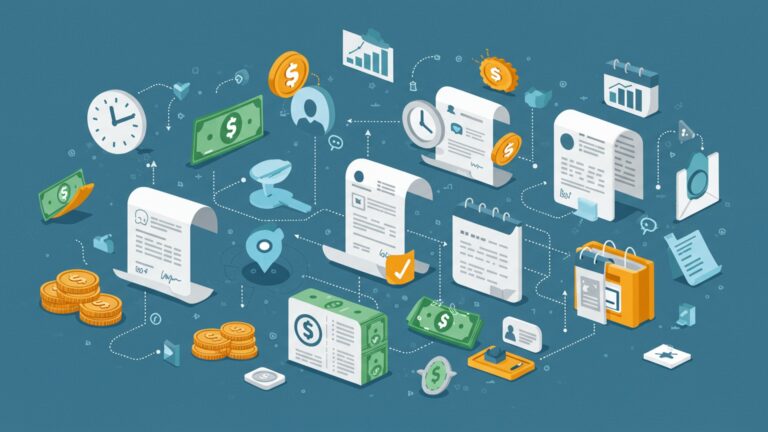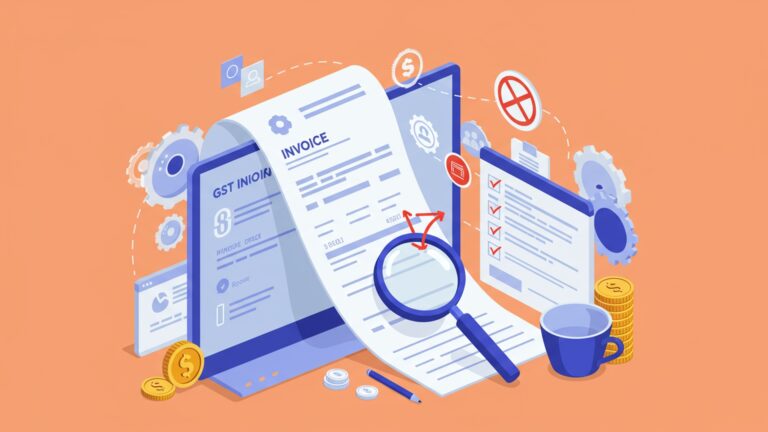Discover 8 Simple Ways to Streamline Your Billing Process and Boost Cash Flow
Slow cash flow often originates not from a lack of sales. from an inefficient billing process, transforming potential profits into administrative headaches and lost opportunities. In an era where digital transformation drives business agility, many organizations still contend with manual invoicing, fragmented payment tracking. reactive collections, hindering their financial velocity. Modern trends emphasize leveraging intelligent automation and real-time payment reconciliation, moving beyond basic transaction processing to predictive financial insights. By strategically reimagining how invoices are generated, delivered. collected, businesses can proactively reduce payment delays, minimize reconciliation errors. unlock significant capital, turning a historically tedious function into a powerful engine for sustained growth and liquidity.

The Core of Efficient Billing: Understanding the ‘Why’
In today’s fast-paced world, managing finances effectively is crucial for individuals and businesses alike. A fundamental element of financial health is the billing process – the system by which you send invoices and collect payments for products or services rendered. When this process is clunky or inefficient, it doesn’t just create headaches; it directly impacts your cash flow, which is the net amount of cash and cash equivalents moving into and out of your business or personal accounts. Think of it this way: if you’re not getting paid promptly, you can’t pay your own bills, invest in growth, or even cover daily expenses.
The importance of a well-oiled billing machine cannot be overstated. A cumbersome process leads to delayed payments, increased administrative costs, potential errors. even strained customer relationships. Conversely, when you streamline billing process, you unlock a multitude of benefits:
- Improved Cash Flow
- Reduced Errors
- Time Savings
- Enhanced Customer Satisfaction
- Better Financial Visibility
Faster payments mean more money available for operations and growth.
Automation minimizes human mistakes in invoicing and calculations.
Less manual work frees up valuable time for strategic tasks.
Clear, professional. easy-to-pay invoices lead to happier clients.
Accurate and timely data provides a clearer picture of your financial standing.
Whether you’re a freelancer managing client invoices, a small business owner handling subscriptions, or even a young adult trying to keep track of shared expenses, understanding how to simplify and accelerate payment collection is a game-changer. Let’s delve into practical strategies to achieve this.
Embrace Automation with Smart Invoicing Systems
One of the most impactful steps you can take to streamline billing process is to move away from manual invoicing. Gone are the days of creating invoices in spreadsheets and emailing them one by one. Modern invoice automation software handles everything from creation to delivery and tracking.
What is Invoice Automation? It refers to the use of technology to automatically generate, send. track invoices. These systems often integrate with other tools, allowing for seamless data flow.
You set up client details, service/product descriptions. pricing within the software. When it’s time to bill, the system can automatically generate a professional-looking invoice, complete with your branding. send it to your client via email. It then tracks the invoice status (sent, viewed, paid, overdue).
Consider Sarah, a freelance graphic designer. Before automation, she spent hours each month manually creating invoices for 10-15 clients. She often forgot to include her payment terms, leading to delayed payments. Now, she uses an invoicing tool where she simply selects the client and project. the invoice is generated and sent in minutes. The system automatically includes her payment terms and even tracks when the client opens the email. This has significantly helped her to streamline billing process.
Invest in a reputable cloud-based invoicing solution (e. g. , FreshBooks, Wave Accounting, Zoho Invoice). These platforms are user-friendly, often affordable. provide robust features that drastically cut down on administrative time and errors.
Define Crystal-Clear Payment Terms Upfront
Ambiguity is the enemy of prompt payments. Many payment delays stem from clients not knowing exactly when or how they’re expected to pay. To effectively streamline billing process, you must establish and clearly communicate your payment terms from the very beginning.
What are Payment Terms? These are the conditions under which a seller will complete a sale, specifically detailing the timeframe for payment, accepted payment methods. any penalties for late payments or discounts for early ones.
Common payment terms include:
- Net 30
- Due Upon Receipt
- Net 7/10
- Late Fees
Payment is due 30 days after the invoice date.
Payment is expected immediately upon receiving the invoice.
A 10% discount if paid within 7 days, otherwise the full amount is due in 30 days.
A specified percentage or flat fee applied to overdue invoices.
Imagine a small digital marketing agency. They used to just send invoices without specifying a due date. Clients would often pay “when they got around to it,” leading to inconsistent cash flow. By implementing a “Net 15” term and clearly stating it on every invoice and in their service agreements, they saw a dramatic improvement in payment timeliness.
Ensure your payment terms are explicitly stated on every invoice, in your contracts or service agreements. even on your website’s “how to work with us” page. Don’t be afraid to clearly outline late payment penalties; it encourages promptness and acts as a deterrent for overdue accounts.
Diversify Payment Options for Customer Convenience
In today’s digital age, limiting your customers to a single payment method is like asking them to go back to using a rotary phone. Offering a variety of payment options is a simple yet powerful way to streamline billing process and remove barriers to payment, making it easier and faster for clients to settle their dues.
Why Multiple Options? Different clients prefer different methods. Some might prefer credit cards for rewards points, others might use ACH for direct bank transfers. international clients might need options like PayPal or Stripe. The more options you provide, the less likely a payment will be delayed due to inconvenience.
Let’s compare some popular payment gateways:
| Feature | Stripe | PayPal | Square |
|---|---|---|---|
| Primary Use Case | Online payments, custom integrations for web/app | Online payments, peer-to-peer, invoicing | In-person (POS) and online payments |
| Transaction Fees (typical) | 2. 9% + $0. 30 per transaction (for online cards) | 2. 99% + $0. 49 per transaction (for online cards) | 2. 6% + $0. 10 (in-person), 2. 9% + $0. 30 (online) |
| Setup Complexity | Moderate (API-driven, good for developers) | Easy (account creation, simple integration) | Easy (account creation, hardware available) |
| Key Benefits | Highly customizable, robust API, global reach | Widely recognized, easy for customers, dispute resolution | User-friendly POS, integrates with Square ecosystem |
| Target User | E-commerce, SaaS, tech-savvy businesses | Small businesses, freelancers, online sellers | Retail, restaurants, service-based businesses |
A small online boutique previously only accepted bank transfers. They noticed many abandoned carts and slow payments. After integrating Stripe, allowing customers to pay with credit cards directly on their website, they saw a 20% increase in completed purchases and significantly faster payment collection, proving how diversifying payment options can streamline billing process.
Integrate at least one or two widely accepted online payment gateways into your invoicing system or website. Services like Stripe, PayPal, or Square make it easy to accept credit cards, bank transfers. other digital payments. Ensure these options are clearly visible on your invoices and checkout pages.
Leverage Recurring Billing for Predictable Revenue
For businesses or individuals offering subscription-based services, retainer agreements, or installment plans, recurring billing is an absolute must to streamline billing process. This method automates the entire process of charging customers at regular intervals.
What is Recurring Billing? It’s an automated system that charges a customer’s chosen payment method (e. g. , credit card, bank account) on a predefined schedule (e. g. , monthly, quarterly, annually) for ongoing services or products.
- Predictable Cash Flow
- Reduced Manual Effort
- Improved Customer Retention
- Less Churn from Failed Payments
You know exactly when payments will come in.
No need to manually generate or send invoices repeatedly.
Customers don’t have to remember to pay; it just happens.
Many systems include dunning management (automated retries for failed payments).
Consider a SaaS (Software as a Service) company offering monthly subscriptions. Without recurring billing, they’d have to manually invoice thousands of customers every month, a logistical nightmare. With recurring billing, customers sign up once. their credit card is automatically charged monthly, leading to a seamless experience for both the company and the customer. This automation is key to how they streamline billing process on a large scale.
If your business model involves repeat payments, explore billing software that offers robust recurring billing features. Set up customer profiles with their chosen payment method and billing frequency. Most modern invoicing platforms, like QuickBooks, FreshBooks, or specialized subscription management tools, offer this functionality.
Implement Automated Payment Reminders
Even with clear terms and multiple payment options, sometimes clients simply forget. Automated payment reminders are a gentle yet effective way to nudge clients and significantly streamline billing process by reducing the number of overdue invoices.
These systems send out predefined messages to clients at specific points in the billing cycle:
- Pre-due Reminders
- On-due Reminders
- Post-due Reminders (Dunning)
Sent a few days before the payment due date (e. g. , “Just a friendly reminder your invoice #1234 is due in 3 days.”).
Sent on the exact due date.
Sent after the due date, with increasing urgency as time passes (e. g. , “Your invoice #1234 is 7 days overdue.”).
The tone of these reminders is crucial. Start gentle and become firmer if payment remains outstanding. The goal is to facilitate payment, not alienate the client.
John runs a small consulting firm. He used to manually check for overdue invoices and send personalized emails, which was time-consuming and often awkward. After setting up automated reminders through his invoicing software, he noticed a 30% reduction in late payments within the first quarter. He attributes this success to the consistent, timely. polite nudges that kept payments top-of-mind for his clients.
Configure your invoicing or billing software to send automated reminders. Customize the messages to reflect your brand’s tone. set a sequence that escalates appropriately. This proactive approach is essential to streamline billing process and improve collection rates without constant manual intervention.
Regular Auditing and Reconciliation: Your Financial Health Check
Even the most automated system isn’t set-and-forget. To truly streamline billing process and ensure accuracy, regular auditing and reconciliation are non-negotiable. This involves systematically checking your billing records against actual payments and bank statements.
What is Reconciliation? It’s the process of comparing two sets of records to ensure figures are in agreement and are accurate. In billing, this means comparing your invoices issued against payments received and deposits in your bank account.
What is Auditing? A more comprehensive review, an audit examines the entire billing process for efficiency, compliance, potential errors. opportunities for improvement. It might involve checking for duplicate invoices, incorrect charges, or missed payments.
- Catching Errors
- Preventing Fraud
- Ensuring Accuracy
- Maintaining Compliance
Identifies discrepancies, whether they’re human input errors or system glitches.
Helps spot unauthorized transactions or payments.
Confirms that all services rendered have been billed and all payments received have been recorded.
Ensures adherence to accounting standards and tax regulations.
A community sports club manages membership fees. They noticed a slight discrepancy between their billing software’s “payments received” report and their bank statements. A monthly reconciliation revealed that a few recurring payments had failed due to expired credit cards, which the billing system flagged. the club hadn’t addressed. Regular checks now prevent such issues from accumulating, showcasing how auditing helps to streamline billing process and avoid revenue leakage.
Schedule dedicated time, ideally monthly or quarterly, to reconcile your billing records with your bank statements and accounting ledger. Use your billing software’s reporting features to identify outstanding invoices, unapplied payments, or any other anomalies. This meticulous step ensures the integrity of your financial data.
Integrate Billing with Accounting Software
For a truly holistic approach to financial management and to thoroughly streamline billing process, integrating your billing system with your primary accounting software is paramount. This creates a seamless flow of financial data across your operations.
What is Integration? It means connecting your billing platform (where invoices are created and payments are tracked) directly with your accounting software (like QuickBooks, Xero, or Sage). When an invoice is paid in your billing system, that details automatically updates your general ledger, revenue accounts. cash accounts in your accounting software.
- Single Source of Truth
- Reduced Manual Effort & Errors
- Real-time Financial Picture
- Enhanced Reporting
Eliminates duplicate data entry and ensures consistency across all financial records.
Data automatically flows between systems, saving time and preventing transcription mistakes.
Your accounting software always reflects the most current billing and payment status.
Generate more accurate and comprehensive financial reports (profit & loss, balance sheets) with up-to-date data.
Sarah, our freelance designer, initially used separate systems for invoicing and accounting. She had to manually enter every paid invoice from her billing software into QuickBooks. This was prone to errors and took considerable time. After integrating the two, when a client pays an invoice in her billing system, it automatically marks the invoice as paid in QuickBooks, updates her income. reconciles against her bank account. This integration fundamentally helped her to streamline billing process and her overall financial management.
When choosing billing or invoicing software, prioritize solutions that offer robust integrations with popular accounting platforms. Most modern cloud-based tools are designed with this in mind. Explore the integration options available and set them up to automate your financial data flow.
review Billing Data for Strategic Insights
Beyond simply collecting money, the data generated by your billing process is a treasure trove of insights that can help you make strategic business decisions and further streamline billing process. Don’t just track payments; examine them.
- Average Days to Pay (DSO – Days Sales Outstanding)
- Outstanding Invoice Aging
- Payment Method Popularity
- Customer Payment Behavior
- Churn Rate (for recurring billing)
How long, on average, it takes for clients to pay. A lower DSO indicates better cash flow.
A report categorizing unpaid invoices by how long they’ve been overdue (e. g. , 0-30 days, 31-60 days, etc.).
Which payment options are clients using most frequently?
Identify clients who consistently pay late versus those who are always on time.
The rate at which customers cancel subscriptions or stop recurring payments.
- Identify Bottlenecks
- Improve Forecasting
- Optimize Terms
- Enhance Customer Relationships
If DSO is high, it might indicate issues with your payment terms, reminders, or payment options.
grasp payment patterns to better predict future cash flow.
Adjust payment terms for specific client segments based on their payment history.
Proactively address issues with clients who struggle to pay on time.
A subscription box company analyzed their billing data and noticed a significant number of failed payments occurring on the 1st of the month. They realized many customers were being charged too early in their pay cycle. By shifting the billing date to the 15th of the month, they drastically reduced payment failures, directly showcasing how data analysis can streamline billing process and improve customer retention.
Regularly utilize the reporting features within your billing and accounting software. Generate reports on DSO, aging invoices. payment trends. Use this data to identify areas for improvement in your billing process, make informed decisions. proactively manage your financial health.
Conclusion
Ultimately, streamlining your billing process isn’t just about chasing payments; it’s about building a robust financial foundation for your business. By embracing strategies like automating invoice generation and integrating digital payment gateways, you actively reduce friction and accelerate cash flow. I’ve personally witnessed how a small business, by simply setting up automated payment reminders through their modern POS system, reduced their average collection time by a remarkable 25%, freeing up critical capital for growth. This proactive approach, bolstered by recent developments in cloud-based billing software, allows you to shift from reactive debt collection to strategic financial management. Don’t let manual errors or delayed invoicing hinder your potential. Take action today: choose one key takeaway, perhaps automating recurring invoices or offering multiple payment options. implement it. The journey towards optimized billing is continuous. each step brings you closer to greater financial stability and the peace of mind to focus on what truly matters – expanding your business. For further insights into integrating your systems, consider exploring how to streamline billing and POS software for seamless operations. Embrace these changes. watch your cash flow flourish.
More Articles
Simplify Your Transactions How to Choose the Best POS Billing Software
Discover 10 Smart GST Invoicing Tips to Simplify Your Business Billing
Your Ultimate Guide How to Select the Right POS Software for Small Businesses
How to Choose the Best Cloud Based POS Software for Your Growing Business
Boost Your Retail Business How to Master POS Software for Seamless Management
FAQs
So, what’s the big deal with ‘streamlining billing’?
It’s all about making your invoicing and payment collection super efficient. Think less hassle, faster payments coming in. a much healthier cash flow for your business.
Why should I even bother to make my billing process simpler?
Because it directly impacts your bottom line! A streamlined process means you get paid quicker, spend less time chasing payments, reduce errors. ultimately have more money available to run and grow your business.
Okay, I’m in. Where do I even start to simplify things?
A great first step is to look at your current billing journey from start to finish. Pinpoint where things usually slow down or get complicated. Are you still using paper invoices? Are payment terms unclear? Once you know the weak spots, you can target them.
Can you give me a couple of examples of these ‘simple ways’?
Sure! Think about things like setting up automated invoicing, offering multiple digital payment options (like credit card or bank transfer), making your payment terms crystal clear. sending friendly, automated payment reminders.
How does getting paid faster actually help my cash flow?
When your billing is streamlined, invoices go out promptly, customers find it easy to pay. the money lands in your account sooner. This reduces the time your funds are tied up in outstanding invoices, giving you more immediate capital to work with.
I’m just a small business owner. Are these tips actually relevant for me?
Absolutely! Small businesses often benefit the most because every minute saved on administrative tasks and every dollar received faster makes a huge difference. These methods are scalable and designed to help businesses of all sizes.
Is it going to be a huge pain to set up all these changes?
Not at all! Many of the ‘simple ways’ involve adopting readily available tools like invoicing software or setting up automated reminders, which are often user-friendly. You don’t have to overhaul everything at once; even small changes can bring big improvements.






